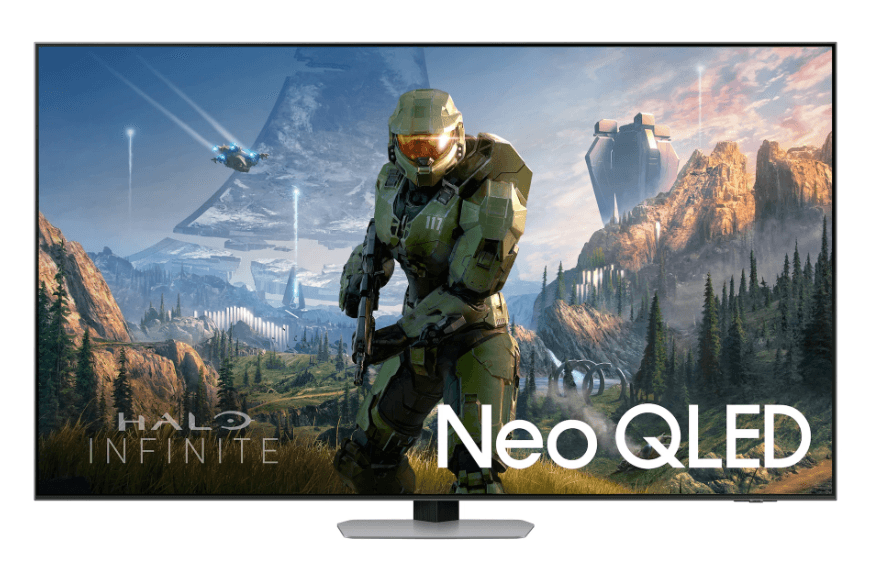
Having already exited the LCD display manufacturing business, Samsung Display is now set to close down its LED backlight manufacturing operations, so it can focus exclusively on QD-OLED and MicroLED panel production.
The South Korean display manufacturing giant shut down its last LCD production line in 2022, but it continued to make the LED backlights for Samsung Electronics' Mini-LED (Neo QLED) TV models in house. But that will no longer be the case once it shutters its LED shop, leaving it entirely reliant on Chinese manufacturers to provide the components of its TV displays.
The practice of relying on outsourced components is not unusual, with brands like Sony and Panasonic operating this kind of model for years already. But Samsung Display’s decision is still noteworthy considering it was one of the pioneers of Mini-LED technology in TVs and continues to be one of its strongest advocates. Of course, most readers will be aware that Mini-LED was the company’s display technology of choice until as recently as 2022, when it debuted its first QD-OLED models.
South Korea’s Maeil Business News was the first to report that Samsung Display will exit the LED production business, which generated around £1.12 billion in revenue for the company last year.
A second report by FlatPanels HD indicates that Samsung Display has already created a timeline to shut down its last LED manufacturing facility. It will cease production of LED chips in the first half of 2026, though it will continue to manufacture LED components for the automotive industry until 2030. However, it is also said to be considering exiting that business, too.
We should note that Samsung Display itself has not yet confirmed any of these reports, but it would not be a surprise if the news turns out to be correct, as the company has already scaled back its involvement in LCD TV manufacturing considerably. It quit making LCD TV panels back in mid-2022, in move that was followed by its arch-rival LG Display earlier this year.

Following that decision, Samsung’s Neo QLED TVs are made using LCD panels supplied by the likes of BOE and TCL CSOT. It did also use some panels provided by LG Display, but of course that source has now dried up. Given that both BOE and TCL CSOT also manufacture LED backlights, it’s likely that they will be among Samsung’s suppliers for those components.
Samsung’s decision to exit the LCD business was mainly about money. With cheaper labour costs in China, BOE and TCL CSOT can manufacture LCD panels at lower costs, which meant they put a real dent in Samsung Display’s LCD revenues.
By exiting LED production, Samsung Display may well look to step up its QD-OLED and MicroLED display manufacturing operations. Samsung Electronics’ flagship OLED TV, the Samsung S95D, features a QD-OLED panel supplied by Samsung Display. The same panel is also found on Sony’s A95L TV, as well as a number of video gaming monitors from companies like Asus and Alienware.
QD-OLED panels combine traditional OLED with Quantum Dots and the TVs that use them have received some rave reviews, with their impressive colour reproduction and contrast cited as the biggest benefits.
Samsung Display may also take the opportunity to try and ramp up its efforts in MicroLED, which is often said to be a superior technology to OLED and QD-OLED. The company has already released a couple of MicroLED-based TVs in the past, but they remain incredibly expensive due to the sky-high production costs. It has been working on ways to reduce those costs and make the technology more commercially viable, and with any luck we might see some progress on that front in the coming years.
In related news, a second report by Flatpanels HD said Samsung Electronics is looking to claw back its declining market share in the super-large TV segment, where it has lost ground to rivals like TCL and Hisense in recent years.
The Chinese TV brands have kicked off a trend that has seen jumbo-sized LCD TVs become more popular in the last few years, and both companies have seen an increase in sales of TVs measuring 100-inches and more.
Samsung Electronics has taken note of that success and it wants a piece of the pie. At present, its biggest QLED TVs max out at 98-inches, but it’s set to go even bigger next year with the launch of new models measuring 100-inches, 110-inches and 115-inches.
FlatPanels HD cited a report by ETNews, which said Samsung’s first 115-inch TV could hit the market in “a few months”, suggesting it might be seen at CES 2025 next January.